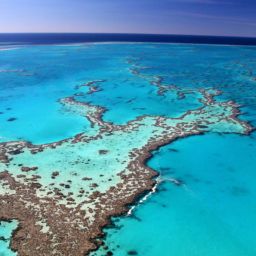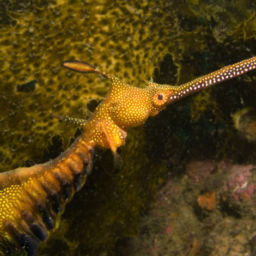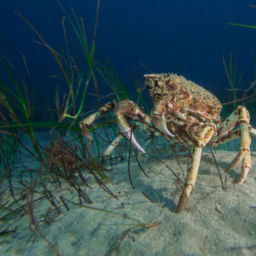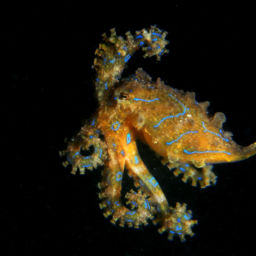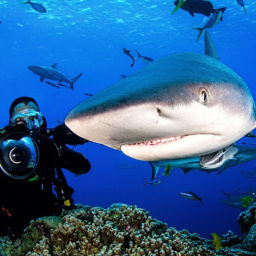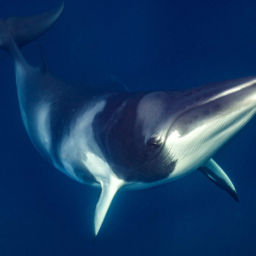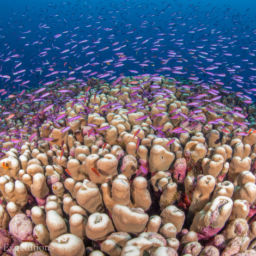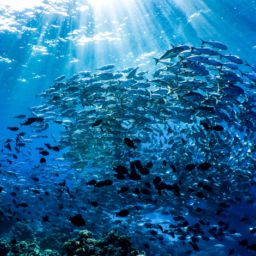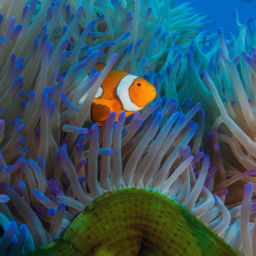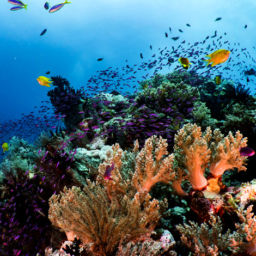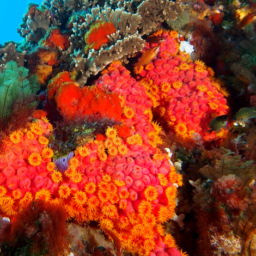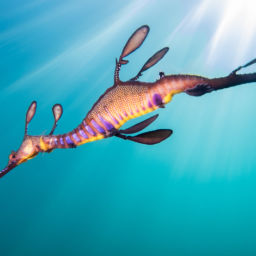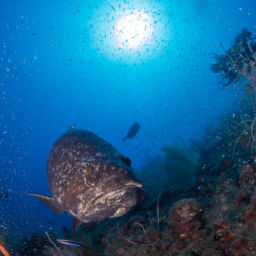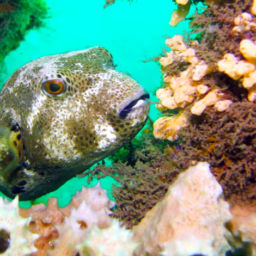When most people think about diving on the world’s most iconic reef, they imagine turtles and barracuda. But look beyond the sweeping views and charismatic marine life to see some of nature’s most amazing animals. They are mostly smaller than your hand or finger but pack more color and beauty than many of the largest ocean animals. Here’s some of the most amazing macro life on the Great Barrier Reef to keep an eye out for.
Lacy scorpionfish
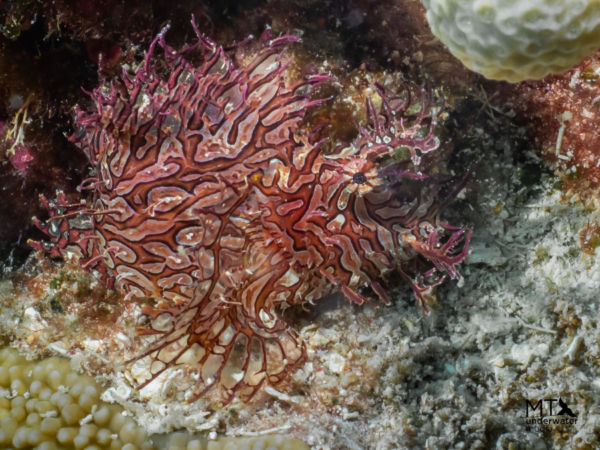
Tucked in on the coral-covered seafloor, these amazing animals rely on their intense camouflage to fool their prey into getting a little bit to close. It is then that they open wide and, with a lightning-quick strike, swallow their prey in one mouthful. When trying to find these crazy critters search the seafloor and keep an eye out for their psychedelic body pattern.
Longnose filefish
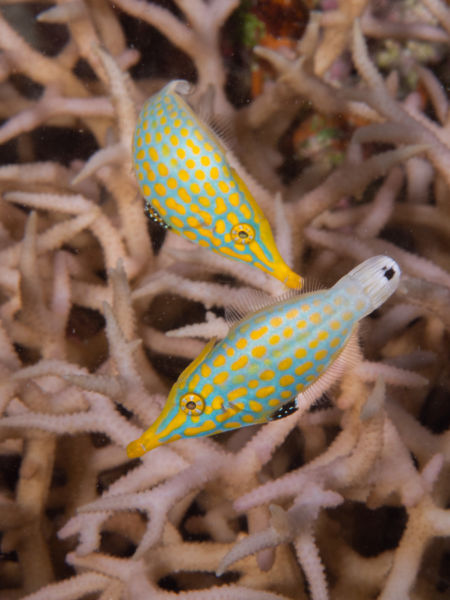 These tiny fish are a common site on shallow reef systems, with long, iconic yellow noses and a multitude of yellow color markings speckling their green bodies. When viewed up close they are stunning fish to behold. Combine that with the fact you’ll nearly always find them in pairs, and you’ve got a fantastic macro photography subject. A handy hint when photographing a filefish: let it come to you. Make chase and they soon disappear among the twisted coral world below.
These tiny fish are a common site on shallow reef systems, with long, iconic yellow noses and a multitude of yellow color markings speckling their green bodies. When viewed up close they are stunning fish to behold. Combine that with the fact you’ll nearly always find them in pairs, and you’ve got a fantastic macro photography subject. A handy hint when photographing a filefish: let it come to you. Make chase and they soon disappear among the twisted coral world below.
Nudibranchs
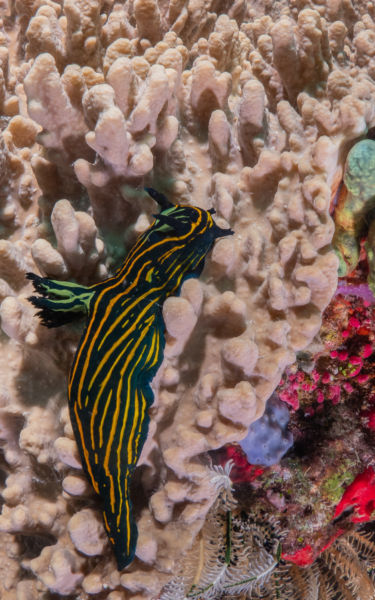 When most people think of tropical North Queensland, they often forget about the humble nudibranch. But don’t be so quick to dismiss the macro photographer’s favorite subject. Look closely and you will see that these colorful sea-slugs are everywhere. The one pictured here is actively hunting other nudibranchs, making for an exciting story to go with the image.
When most people think of tropical North Queensland, they often forget about the humble nudibranch. But don’t be so quick to dismiss the macro photographer’s favorite subject. Look closely and you will see that these colorful sea-slugs are everywhere. The one pictured here is actively hunting other nudibranchs, making for an exciting story to go with the image.
Anemonefish
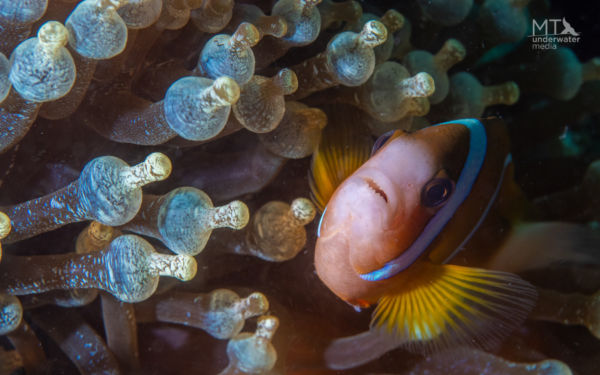 Almost every scuba diver has a soft spot for anemonefish. These happy looking guys make for fantastic macro subjects — if you can frame them in your camera, that is. One hint is to pick a camera spot on the anemone and wait. Usually within a minute or two, the fish will have darted straight into your sights. Make sure you have pre-focused you camera, however, as they are one speedy fish. Another advantage of photographing Nemo and his cousins is that the anemone tentacles provide a great backdrop, offering color, sharpness, and contrast between your subject and the rest of the image.
Almost every scuba diver has a soft spot for anemonefish. These happy looking guys make for fantastic macro subjects — if you can frame them in your camera, that is. One hint is to pick a camera spot on the anemone and wait. Usually within a minute or two, the fish will have darted straight into your sights. Make sure you have pre-focused you camera, however, as they are one speedy fish. Another advantage of photographing Nemo and his cousins is that the anemone tentacles provide a great backdrop, offering color, sharpness, and contrast between your subject and the rest of the image.
Crabs, crabs and more crabs
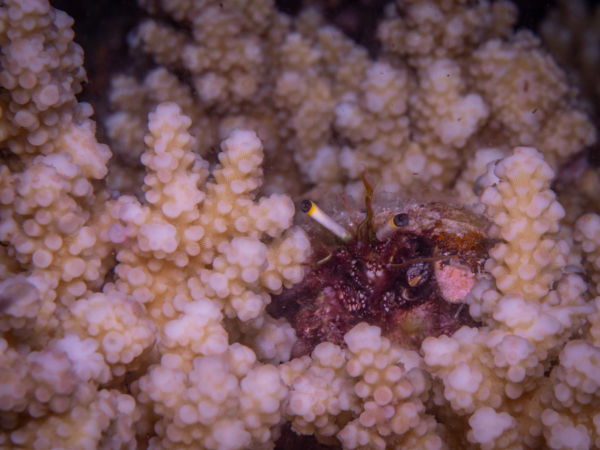 Finally, if you dip into the tropical Australian waters at night a plethora of crustacean life awaits you. Inside every hard coral you will almost certainly find a crab or five moving around and chowing down on some planktonic dinner. The difficulty will be finding a subject that isn’t partially obscured by hard-coral polyps. Unlike many of the other macro photography subjects described here, crabs are better than you at playing the waiting game. Therefore, it pays to keep looking and, instead of trying to take a photo of a certain individual, move on to the next crab. Eventually a cooperative crustacean will appear thanks purely to the enormous number that call the Great Barrier Reef home.
Finally, if you dip into the tropical Australian waters at night a plethora of crustacean life awaits you. Inside every hard coral you will almost certainly find a crab or five moving around and chowing down on some planktonic dinner. The difficulty will be finding a subject that isn’t partially obscured by hard-coral polyps. Unlike many of the other macro photography subjects described here, crabs are better than you at playing the waiting game. Therefore, it pays to keep looking and, instead of trying to take a photo of a certain individual, move on to the next crab. Eventually a cooperative crustacean will appear thanks purely to the enormous number that call the Great Barrier Reef home.


